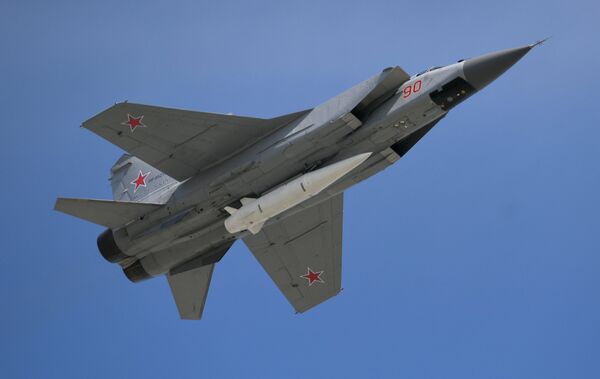The Bush administration’s decision to abandon the Anti-Ballistic Missile Treaty in 2002 was the direct impetus for Russia to start building its arsenal of strategic hypersonic weapons systems, Deputy Foreign Minister Sergei Ryabkov has said.
“Had the United States not withdrawn from the ABM Treaty, now there would not be this situation with the new systems. The Americans refuse to understand this, and to accept this simple logic. They deny the inextricable, invaluable interconnection between strategic offensive and strategic defensive weapons,” Ryabkov said, speaking at a briefing.
According to the senior diplomat, by and large, “the primary reason for our work and success in creating these new systems lies precisely with the US withdrawal from the ABM Treaty”.

New Start Under Threat
Ryabkov’s comments come just a day after he warned that the US may soon formally announce its intention not to renew the New START arms reduction treaty. That treaty is now the last major strategic arms control treaty between the nuclear superpowers, and will expire in February 2021, unless both sides agree to sit down to renew it.
Last week, President Donald Trump appointed Russia-sanctions cheerleader and arms control opponent Marshall Billingslea as his new special envoy on arms control.
The Trump administration has recently suggested that extending New START would require Russia to make concessions on its new hypersonic missile systems, and account for China’s nuclear arsenal. Moscow and Beijing have rejected such proposals, pointing to the terms of the original treaty.
Elsewhere in his remarks, Ryabkov indicated that Russia would not be willing to discuss restrictions on its hypersonic systems with the US unless America would curtail its own hypersonic weapons; the US plans to create a global anti-missile system and the Pentagon plans to deploy weapons in outer space; theses items were also up for discussion.

Last year, weeks before the US formally scrapped its commitment to the INF, Russian President Vladimir Putin warned that Washington’s short-sighted decision to do so had put the world at risk of a new nuclear arms race. Putin has also stressed Russia’s readiness to discuss the fate of the New START immediately and without preconditions, warning that “if this treaty ceases to exist, there would be no instrument in the world to curtail the arms race.”
Putin has also lamented the Bush administration’s decision to scrap the ABM Treaty in the early 2000s, indicating that he was “convinced that the world would be a different place today, had our US partners accepted” the proposal of joint missile defence projects between the US, Russia and Europe.
Instead, Washington has ramped up the construction of missile shield components in Poland and Romania, systems which Russian officials have repeatedly warned could be upgraded to destabilise the strategic balance, either by targeting Russian missiles, or even launching offensive cruise missiles at targets inside the country.
Russia’s nuclear forces have received or are in the process of receiving a series of new strategic weapons in recent years, including the RS-28 Sarmat intercontinental ballistic missile, the Avangard hypersonic boost-glide vehicle, and the Kinzhal air-launched hypersonic cruise missile, among others. The systems are aimed at ensuring global strategic stability –including guaranteeing a response in the event of a US massed nuclear or missile first strike, or large-scale conventional NATO aggression against Russia.




